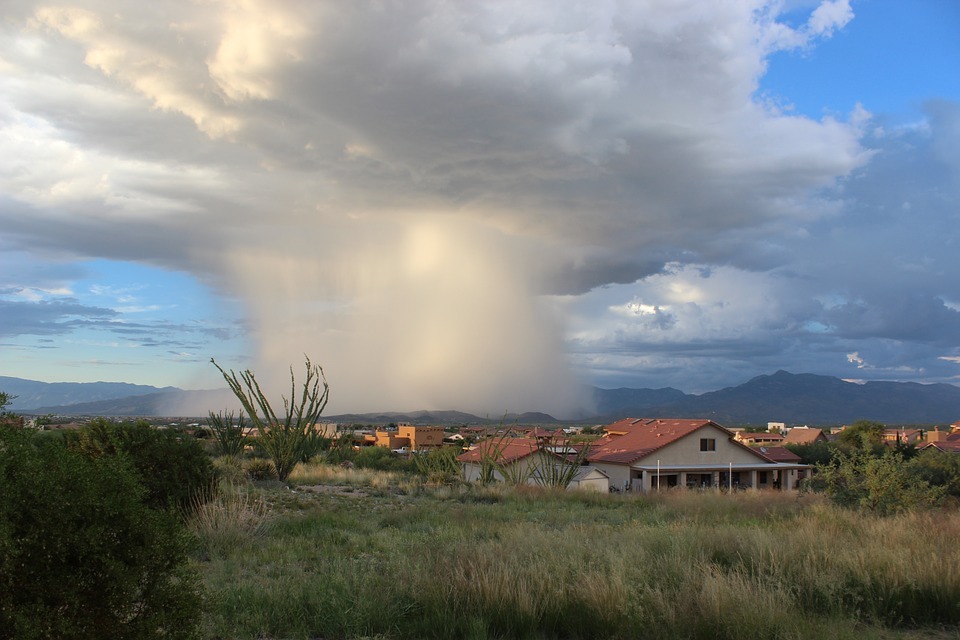Clouds contain water droplets that condense and eventually turn into rain. However, not all the time that the water is enough to create precipitation. Sometimes, water molecules spread out due to the lack of water droplets on the clouds. This is where the importance of cloud seeding comes in.
WHAT IS CLOUD SEEDING?
Cloud seeding is a method done to modify the clouds and the weather for a given day. It is usually used when rain or snowfall is needed. When you do cloud seeding, very tiny ice-like particles, usually silver iodide, are added to the clouds. They serve as condensation nuclei, small particles that are suspended in the air wherein water vapor starts condensing, forming clouds, haze, rain, fog, and many other different forms of precipitation. Water vapor in the clouds condense around these very tiny, ice-like particles, and then they start grouping until they form large water droplets, large enough to make a rainfall.
THREE METHODS OF CLOUD SEEDING
Cloud Seeding works in several ways. These methods involve distinct objects and actions but it gives off just the same results. Three different methods of cloud seeding include Static Cloud Seeding, Dynamic Cloud Seeding, and Hygroscopic Cloud Seeding.
- Static Cloud Seeding
This method uses chemical compounds such as silver iodide and chloride are spread in the clouds. Silver iodide has some crystal in its compound wherein the moisture it contains could condense. Since the clouds already have moisture, the role of silver iodide is to add more moisture to the clouds for it to be more effective in making a strong rainfall.
- Dynamic Cloud Seeding
This method involves boosting the vertical air currents so that more extra water will be encouraged to pass through the clouds, whereas as result, translates to more rain. However, dynamic cloud seeding could be a very complicated method since it needs an order of 11 events working properly. Failing one event or stage of this method leads to failure of executing the dynamic cloud seeding. This method also uses way more ice crystals than the static method. Over 100 times more ice crystals are needed for this method to be effective.
- Hygroscopic Cloud Seeding
This last method of cloud seeding utilizes salt. For this method to work, salts are dispersed in the lower part of the clouds through the help of flares or even explosives. When the water droplets unite with the dispersed salt, the salt will increase its size. This method is quite new which is why even though it might be “promising”, further researches still need to be conducted.
Different ways like using a cloud seeding aircraft to drop to the clouds some particles from above and also using large canons to shoot the ice particles into the clouds are also practiced.
WHAT ARE THE BENEFITS OF CLOUD SEEDING?
Cloud seeding could be very beneficial to the lives of people. Here are some instances wherein people benefit from cloud seeding.
- Snowfall in winter sports areas is enhanced
- Increase in the water supply to different regions
- Balances water vapor in the clouds which can help in avoiding strong rains and huge damages brought by the storms
- Helps prevent drought, in turn boosting the agricultural production and economy of the region
IS CLOUD SEEDING EFFECTIVE?
Scientists might find it hard to determine whether cloud seeding is really effective or not. During the past years, scientists say that cloud seeding with the use of silver iodide and frozen carbon dioxide has little to no impact on precipitation. However, as time passes by, technology is also evolving and many pieces of research are also improving. According to some scientists, cloud seeding can be one way to help in supplying dependable and inexpensive water to different regions.
Regardless of the difference in the opinions of the scientists and the varied scientific results, a successful cloud seeding happened in Beijing during the 2008 Summer Olympics. This means that there is a big possibility that cloud seeding is effective.
WHAT ARE THE POSSIBLE DANGERS OF CLOUD SEEDING?
Some believe that cloud seeding is very helpful to the lives of people but some say that cloud seeding has its own set of dangers. The silver iodide that is usually used in cloud seeding could be toxic to both land and water. Soil contamination might occur and aquatic life might be put in danger. If there is intense exposure to silver iodide, incapacitation and some residual injury are most likely to happen. There are also arguments if cloud seeding can worsen global warming and climate change. Some also say that the results of cloud seeding can be damaging to the environment.


